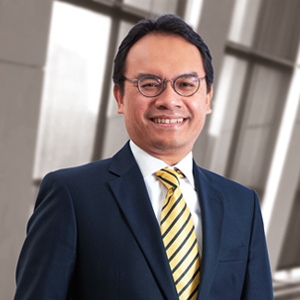Meeting real societal needs
Islamic finance, for the most part, has tried to focus on meeting real societal needs. However, whether these financial institutions are actually providing for the right need and how they can grow is a different question.
What’s next for Islamic finance?
When Islamic finance first began in the 1970s, there were few signs that could have predicted the growth that the industry would experience in merely three decades. From being just a ‘window’ offering deposits in a handful of banks, Islamic finance is now a fully integrated alternative financial sector, providing ethical financial solutions to markets worldwide.
According to the report ‘Innovations drive expansion of global Islamic finance industry’ by the Malaysia International Islamic Financial Centre (MIFC), the Islamic financial industry – with estimated assets worth USD 2 trillion – has experienced annual growth of between 15 percent and 20 percent over the last decade.
The keyword in the industry’s growth trajectory has been ‘innovations’. Innovations in product development have led to a complete financial system that offers capital market products, investment banking and insurance services.

Growth opportunities
There is plenty of room for the Islamic finance industry to grow, as it catches up with conventional finance to meet evolving market needs. Dato’ Muzaffar Hisham, Group Head of Global Banking of Maybank Group, offers his perspective of the important growth areas for Islamic finance. For him, one key growth area has been the sukuk market, which has been instrumental in fueling infrastructure growth, for instance in Malaysia.
‘In the region over the last five to six years, the value of Islamic finance products and services has also opened up more market in the consumer space,’ said Dato’ Muzaffar. Half of Maybank Islamic’s customers in Malaysia are non-Muslims, indicating that Islamic finance has created value for its expanding base of customers and stakeholders.
The MIFC report also identified several new growth areas for the industry, for example funding green, ethical and environmentally-friendly development projects or enabling international risk management using shariah-compliant hedging instruments.
Innovations in Islamic finance
According to Dato’ Muzaffar, the key driver of growth in Islamic finance is that it allows a greater deal of innovation that will create more value for the stakeholders. ‘Innovation is key to our survival,’ he said. ‘Innovation provides us with the opportunity to create value, to address the question, “Why do we want to come up with this product?”‘
Dato’ Muzaffar added that Islamic banking’s shariah structures, as well as its rules and regulations, have allowed the bank to be innovative, yet manage its risk effectively. These advantages of Islamic finance have enabled Maybank Islamic to grow aggressively, as well as better manage the business.
He identified three current innovations in Islamic finance that have been game-changers for the industry. ‘The first is the issuance of sukuk by the UK in 2014. Sukuk with the Western world is a fantastic opportunity because there are a lot of trade activities. The more intra trade there is, and the more open the market is, the more value to develop the economy.’ The second key innovation, he said, was the Mudaraba. ‘The structure of Mudaraba has allowed us to run the bank a bit more efficiently and to have greater value of returns in terms of our customers.’ Another important innovation lies in the zakat system, which indirectly uses the strength of capitalism and the strength of the economy to effectively help those in need.
‘If we do something that is sustainable, and we serve the community, it serves us well too. It creates good branding and a good relationship with the state,’ Dato’ Muzaffar explained.
Questions we must keep asking
‘My hope is that we can find a way of integrating institutions with the community and answer the fundamental question of “Why do we do this?” I don’t have the answer but we need to keep asking it,’
Developing innovative products and services in Islamic finance is not something that happens overnight. ‘You have to equip people with knowledge in Islamic finance – not only people within the industry, but all the way to the stakeholders,’ said Dato’ Muzaffar. ‘We have to understand the needs in the industry and what we can do. We need empathy and we need data.’
Secondly, he stressed that there is no short cut to innovation. ‘Folks think that innovation is like a big Pandora’s box. You have a light bulb moment and off you go. But there’s a lot of hard work involved.’
The MIFC report notes that the Islamic finance industry is expected to reach the milestone USD 6.5 trillion mark in assets by the year 2020. This is not a foretelling of the future, but an estimate of the industry’s potential if it continues to evolve, spurred on by innovations. ‘My hope is that we can find a way of integrating institutions with the community and answer the fundamental question of “Why do we do this?” I don’t have the answer but we need to keep asking it,’
Dato’ Muzaffar concluded.
___________________
This topic was explored at the 11th WIEF sessions on “Islamic Finance for Green Technologies”, “Developing World Class Human Capital in Islamic Finance”, “Islamic Social Finance and the Future of Humanitarian Action”, and in IdeaPad’s Islamic finance products & Waqf projects, and funding platforms.





